Currently, more than a billion people troll social media sites. How can a small business capitalize on converting these users into business leads? Although the numbers are enticing, the "return on investment" (ROI) is not as rewarding if you are looking to generate business leads.
As a new small business owner, I jumped on the Facebook, LinkedIn, Google+, Tumblr, and Twitter platforms to network and generate that "lead" within the social media space. However, the ROI in attracting clients over these platforms continues to pose a challenge for two reasons. First: sorting through the more than one billion users creates "noise," which wastes company time. Who are these people who have enlisted as a fan/follower of your company page? Who among them will convert from fan/follower to the potential client? Second: the above platforms were designed for individuals -- groups/organizations were an afterthought. Overall, they are geared toward an advertising model -- as opposed to a sales lead-generation model.
Lately I have been surveying the prospects of technology innovation in the Middle East & North African (MENA) region. As luck would have it, I came across a startup founded by an Iranian American that aims to address business needs online: the first Business-to-Business (B2B) social network, awesomize.me. Since I have grown tired of generating business leads through networking Happy Hours, PITAPOLICY Consulting registered.
Sorting Through Informational Noise
Small businesses work to generate a business lead. They feel that investing time over social networks amounts to zero financial cost because joining social networks are free. However, generating a business lead over social networks is not free. Sorting through the information and users creates a lot of "noise" and costs time. According to a 2011 HubSpot study of 3,128 businesses, only 2.6 percent of the visits on LinkedIn generated a "lead for a business-to-business (B2B)" connection. The rate was even lower for the more popular Facebook platform.
Often small businesses and nonprofits operate with lean staffing. At the same time, tons of information spew from search engines. If you search for a service that is outside of your business' industry, then there's too much choice. To paraphrase noted economist Dan Ariely: Too much choice without distinction overwhelms the most savvy consumer. Consequently each hour that the small business employee dedicates to sorting through Facebook "Likes" and responding to a Google+ connection amounts to an opportunity cost: improving the product or service.
The amount of energy invested in identifying clients through social networking sites almost exceeds the amount of time in retaining clients. A small business becomes so enmeshed in attracting new clients when they should be focused on exceeding expectations of their clients -- which is one of the key reasons potential customers prefer small boutique firms: tailored customer service.
Individual Preferences Versus Business Preferences
Consumers use sites like Reputation and Yelp, where they express their individual preferences by rating the person or business. But what about business preferences? Unlike Reputation and Yelp, awesomize.me users rate their peers in the business. Essentially, the goal is to link the entrepreneur -- or link "you business-to-business" ("U2B2B") so that "there is a higher return on investment for the connections made through all the social networking noise," according to "Awesomizer" Elias Shams.
The idea of connecting a business to business online is not new. Shams tested out his tech startup in other ventures, like Telezoo. Earlier this year, Shams launched awesomize.me. But this newer platform links business networking with respective B2B needs. I was impressed to see brands like At&t, HP, Dell, and Honda already engaged on awesomize.me.
LinkedIn serves as dream recruitment platform and as a hub for freelancers. Testimonies are written for the LinkedIn users. However, there is no quantifiable assessment of the user. awesomize.me includes a peer-to-peer rating tool: individual to individual, business to individual, and vice versa. Shams' site makes this possible because there are separate company and personal pages. One can leverage this function since it separates quality from the large quantity of online connections.
Back to the networking happy hour scenario: how do you quickly identify someone who is not in your industry and determine her ability within an hour? Technology entrepreneur Jamey Harvey started Sponto and encountered this same challenge. As Harvey shared, "I need to tap into a robust network outside of my tech industry ... something like awesomize helped me conduct market research to identify the appropriate graphic designer to meet Sponto's needs."
Certain industries might require more precision or other descriptive metrics. Expedia does a good job of knowing its audience and "using precise ratings suited to its industry," according to Customer Service Specialist, Ayad Mirjan, and founder of CustomerXConsulting. As awesomize.me gains more traffic, the platform might delve more into certain industries and their unique service metrics
As a small business, I am concerned that the public and private spaces constantly collide with one another. Too much information about the person is available. All social networks face this challenge as platforms evolve with privacy settings. To protect Facebook users, their status updates are not searchable over Google.
On the other hand, if a business provides a great one-time offer within its status update, only Facebook users can take advantage of it. Unfortunately, the advertising potential for that business's or nonprofit's snappy status update decreases because it will not turn up in a Bing or Google search.
Both profits and nonprofits want visibility -- especially when it is free publicity. As Rouzita Vahhabaghai, a fashion designer and co-founder of the ITA Collection of purses, told me, "ITA's awesomize.me listing turns up on the first page" because awesomize tapped into the right search engine optimization formula and plays well with Google.
In the 20th century, businesses used a combination of White Pages, personalized informational interviews, and outright guessing. Perhaps, it is possible to "ping" White pages and receive business references through awesomize.me.